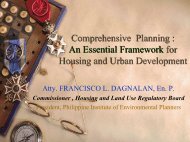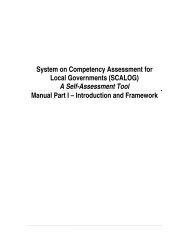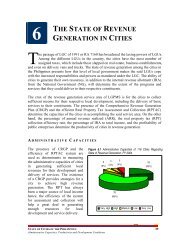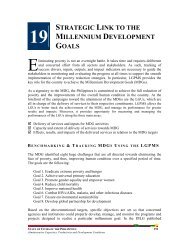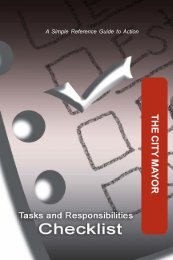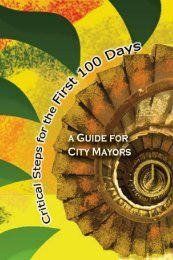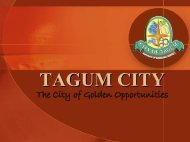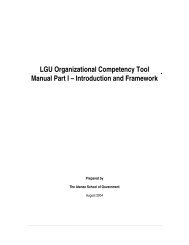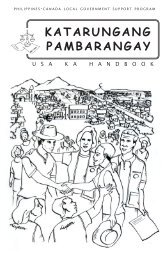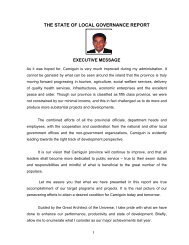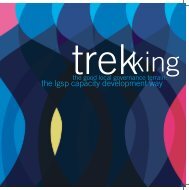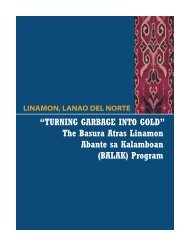PED guidebook main sxn rev6. FINAL.pdf - LGRC DILG 10
PED guidebook main sxn rev6. FINAL.pdf - LGRC DILG 10
PED guidebook main sxn rev6. FINAL.pdf - LGRC DILG 10
You also want an ePaper? Increase the reach of your titles
YUMPU automatically turns print PDFs into web optimized ePapers that Google loves.
Strengthening Provincial/LocalPlanning and Expenditure ManagementProject Evaluationand Developmentto the type of individuals, suppliers or demanders (or constituencies). Insumming up the benefits, the usual principle is “a peso is a peso.” This isdevoid of distributional biases. If the province has very strong equity biasthen different weights can be assigned to the different types ofstakeholders.Example (x): Consider example (m). In the first table, we value the benefits atthe average willingness-to-pay of farmers for the irrigation service. We alreadyknow that it yields a negative NPV when expressed in financial prices. Applyingthe CSCF we computed in example (t), we find that even when expressed ineconomic prices, the NPV is negative. See Table (first part).Now, consider the externality benefits of the project. One hectare of rice farmyields 3,347 kilos of paddy rice. In 2000 prices, the average of demand andsupply price of paddy rice is Php 9.035 per kilo. Given <strong>10</strong>0 hectares, the totaloutput is valued at Php 3,024,014.50. With an irrigation service facility, we canhave two cropping seasons. The economic analysis is given in the following,considering that rice is a nontradeable good 16 . The breakdown of incrementalbenefits (undiscounted) is as follows:Additional income to farmer-ownersAdditional income to hired laborAdditional income to owners of capital1,035,529.00913,300.00327,700.00The re<strong>main</strong>der, amounting to about Php 747,500 per year (undiscounted) is thebenefit derived by the consumers of rice. The above figures are based on thecost and return tables produced by the Bureau of Agricultural Statistics.The expanded economic analysis yields a positive NPV. Based on 4.3.5 c, weknow that this means that the project generates positive externalities, eventhough it is not financially viable.If the economic analysis yields a negative NPV, the projectshould not be undertaken. This means that the benefits theproject can give to society is less than the amount it coststo implement it.16 Strictly speaking, rice is an importable good. The problem, however, is that the trade is governed by quantitativerestrictions, instead of the usual tariff schedule.RGEdillon January 200654



